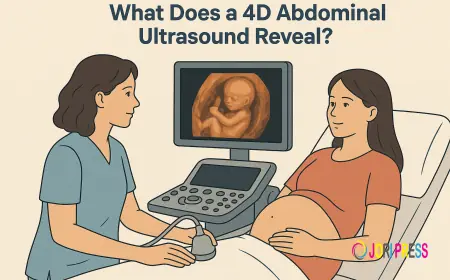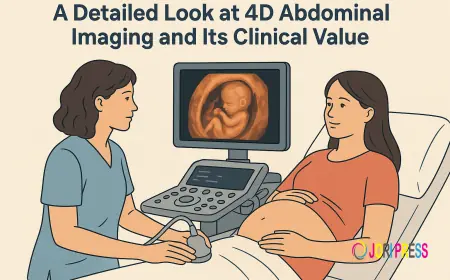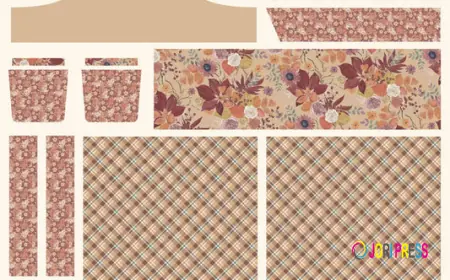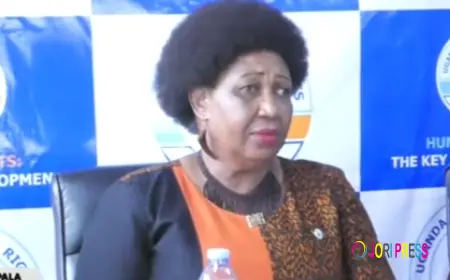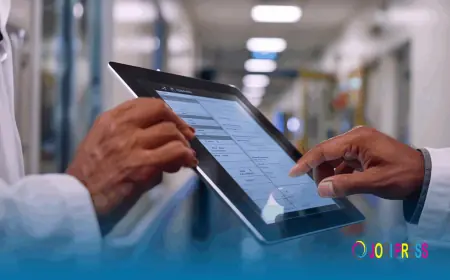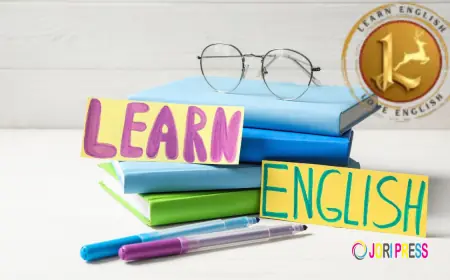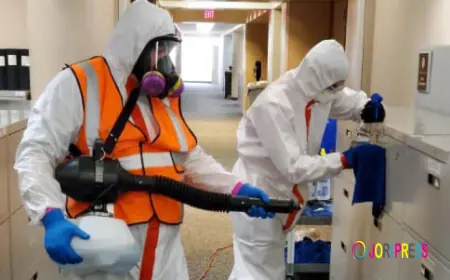Occupational Therapy for ADHD | How It Helps Children & Adults Focus Better
Discover how occupational therapy for ADHD helps children and adults improve focus, manage emotions, and build daily life skills. Learn its benefits, techniques, and real-life success stories.
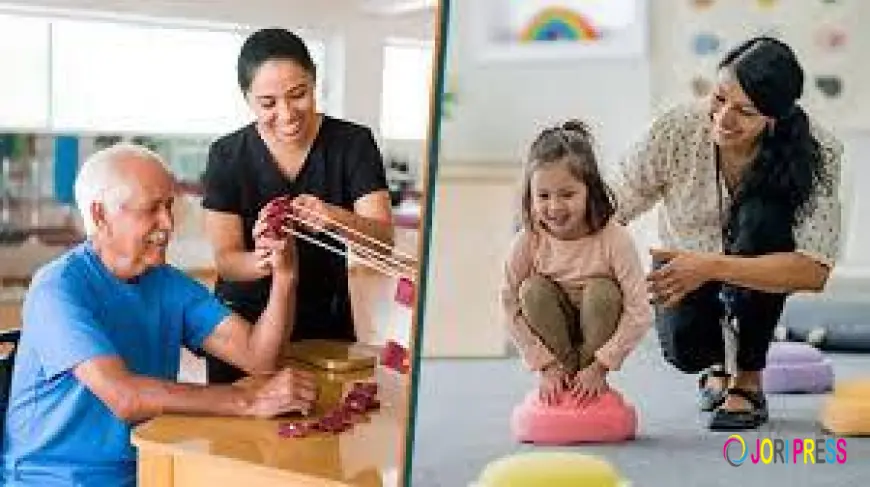
Introduction
Attention Deficit Hyperactivity Disorder (ADHD) affects millions of people around the world — from young children struggling in school to adults managing daily responsibilities. The symptoms of ADHD can make it challenging to focus, stay organized, and regulate emotions. While medication and counseling often play a key role in treatment, one highly effective yet sometimes overlooked approach is occupational therapy for ADHD.
Occupational therapy (OT) focuses on improving a person’s ability to perform daily activities with confidence and independence. For individuals with ADHD, occupational therapists provide tools, strategies, and routines to help manage attention, reduce impulsivity, and enhance self-regulation. In this article, we’ll explore how occupational therapy helps both children and adults with ADHD live more balanced and productive lives.
Understanding ADHD
ADHD, or Attention Deficit Hyperactivity Disorder, is a neurodevelopmental condition that affects how a person thinks, acts, and processes information. People with ADHD often face difficulties with focus, organization, and emotional control.
Common symptoms include:
-
Trouble staying focused or paying attention
-
Impulsivity and acting without thinking
-
Difficulty organizing tasks and time
-
Restlessness and hyperactivity
-
Forgetfulness or losing things frequently
ADHD isn’t just about being “distracted” — it’s about how the brain functions differently. And that’s where occupational therapy comes in, helping individuals learn strategies that work with their unique brains rather than against them.
What Is Occupational Therapy for ADHD?
Occupational therapy for ADHD is a specialized treatment that helps people develop practical life skills and coping strategies. Unlike medication, which targets the brain’s chemistry, OT focuses on behavior, sensory processing, and routines to help individuals function effectively in daily life.
Occupational therapists work with children, teens, and adults to address:
-
Focus and attention span
-
Impulse control
-
Time management
-
Sensory sensitivity (to sounds, textures, or movement)
-
Emotional regulation
-
Social interaction and communication skills
In essence, OT helps individuals with ADHD build the tools they need to live more independently and confidently, whether at home, school, or work.
The Role of Occupational Therapy for Children with ADHD
For children, ADHD can make everyday tasks — like getting dressed, completing homework, or following directions — extremely challenging. Occupational therapists help children develop structure and self-regulation skills through engaging, play-based activities.
Here’s how OT benefits children with ADHD:
1. Improving Focus and Attention
Therapists use fun, interactive exercises that train a child’s brain to focus for longer periods. Activities such as obstacle courses, puzzles, and sensory play improve attention span while keeping the child engaged.
2. Enhancing Self-Control and Emotional Regulation
Kids with ADHD often struggle with managing emotions. Occupational therapists teach coping techniques like deep breathing, mindfulness, and “sensory breaks” to calm down and refocus.
3. Building Routine and Organization Skills
OT helps children develop predictable daily routines — from brushing teeth to finishing homework. Visual schedules and checklists are often used to make tasks easier to follow.
4. Addressing Sensory Processing Issues
Many children with ADHD are either overly sensitive or under-responsive to sensory input. OT uses sensory integration therapy to help them process sights, sounds, and touch more comfortably.
5. Supporting Social Skills
Occupational therapy encourages positive interactions through games and role-playing. Kids learn how to wait their turn, share, and read social cues — skills that can boost confidence in group settings.
Occupational Therapy for Adults with ADHD
While ADHD is often associated with children, many adults continue to experience symptoms into adulthood. Occupational therapy can be just as transformative for adults, helping them navigate work, relationships, and everyday responsibilities.
1. Time and Task Management
Occupational therapists help adults create structured schedules, prioritize tasks, and use tools like planners or digital reminders to stay organized.
2. Improving Focus at Work
For adults with ADHD, staying productive at work can be tough. OT introduces focus techniques such as the Pomodoro method, workspace organization, and sensory strategies (like noise-cancelling headphones).
3. Emotional Regulation
Managing frustration, stress, or impulsivity is a key area of focus. Therapists teach grounding techniques, relaxation exercises, and mindfulness to help maintain emotional balance.
4. Enhancing Relationships
Communication and relationship management can be difficult for people with ADHD. OT helps adults recognize social cues, practice empathy, and build stronger personal and professional relationships.
5. Creating Healthy Routines
Building consistent daily habits — such as exercising, eating well, and maintaining sleep schedules — is another major goal of occupational therapy for ADHD.
Common Techniques Used in Occupational Therapy for ADHD
Occupational therapists use a wide range of techniques, depending on the individual’s age, needs, and goals. Some of the most effective methods include:
1. Sensory Integration Therapy
Helps individuals regulate their sensory responses — for example, using weighted blankets, fidget tools, or balance activities to calm hyperactivity.
2. Cognitive Behavioral Techniques
OTs often incorporate CBT-style exercises that teach clients how to recognize and replace negative thought patterns with positive actions.
3. Visual and Organizational Tools
Charts, planners, color-coded folders, and visual schedules make it easier to remember and complete tasks.
4. Environmental Modifications
Changing one’s environment — like reducing clutter or adjusting lighting — can significantly improve focus and reduce distractions.
5. Mindfulness and Relaxation Training
Learning breathing exercises, meditation, and mindfulness helps individuals calm their minds and stay present during challenging tasks.
Benefits of Occupational Therapy for ADHD
Occupational therapy offers countless benefits for individuals with ADHD. Here are some of the most impactful:
-
Improved focus and attention span
-
Better emotional control and stress management
-
Enhanced organization and planning skills
-
Greater independence in daily activities
-
Improved social and communication abilities
-
Reduced impulsive behavior
-
Boosted self-confidence and motivation
Over time, these benefits help individuals lead more balanced, productive, and fulfilling lives — both personally and professionally.
How Parents Can Support Their Child’s OT Journey
For children undergoing occupational therapy, parental involvement is crucial. Here’s how parents can support progress at home:
-
Maintain Consistency: Follow the routines and strategies recommended by the therapist.
-
Create a Calm Environment: Reduce distractions like noise and screen time during focus-based activities.
-
Use Positive Reinforcement: Celebrate small wins and encourage effort.
-
Practice Patience: Progress may take time, but consistency leads to lasting results.
-
Collaborate with the Therapist: Regular communication with the occupational therapist ensures continued improvement.
How to Get Started with Occupational Therapy
If you or your child has ADHD, getting started with occupational therapy is simple. At KickStart Therapy, our team of experienced occupational therapists designs personalized treatment plans tailored to each individual’s strengths and challenges.
Here’s what you can expect:
-
A comprehensive assessment to understand specific difficulties and goals.
-
A personalized therapy plan with measurable outcomes.
-
Continuous progress tracking and adjustments as needed.
-
A supportive environment that encourages growth, confidence, and independence.
Through consistent sessions, clients learn to take control of their focus, routines, and emotions — leading to better performance at school, home, or work.
Why Choose KickStart Therapy?
KickStart Therapy specializes in helping individuals with neurodevelopmental conditions like ADHD, autism, and sensory processing disorders. Our therapists combine compassion with expertise to deliver effective, engaging, and evidence-based therapy sessions.
We believe that every person — child or adult — deserves to thrive, and with the right support, they absolutely can.
Conclusion
Living with ADHD doesn’t have to mean living in constant struggle. With the right tools, structure, and guidance, individuals can learn to focus, stay organized, and manage emotions effectively. Occupational therapy for ADHD offers a holistic, practical approach that empowers people to overcome challenges and succeed in their everyday lives.
Whether you’re a parent seeking help for your child or an adult looking to improve focus and organization, occupational therapy can make a life-changing difference. At KickStart Therapy, we’re here to help you or your loved one build confidence, balance, and independence — one step at a time.
What's Your Reaction?
 Like
0
Like
0
 Dislike
0
Dislike
0
 Love
0
Love
0
 Funny
0
Funny
0
 Angry
0
Angry
0
 Sad
0
Sad
0
 Wow
0
Wow
0







